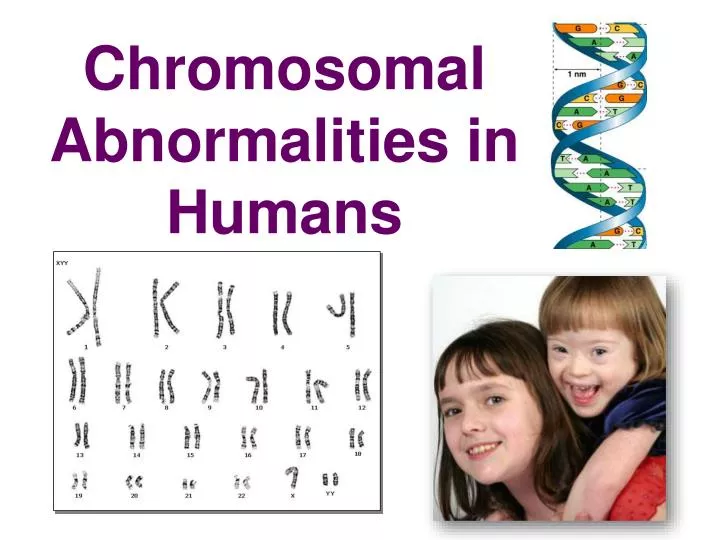Table of Contents
Introduction

Chromosomal disorders are caused by an abnormal number or structure of human chromosomes. All normal humans have 46 chromosomes in 23 pairs; variations from this pattern bring about a gamut of related genetic conditions known collectively as chromosomal disorders. These disorders affect millions of people worldwide and vary in the degree to which they have a physical, cognitive, and developmentally significant impact.
This article explores the biological determinants behind chromosomal disorders, such as Down syndrome, Turner syndrome, monosomy, trisomy, and aneuploidy.
Understanding Chromosomal Disorders
Chromosomes are long, thread-like structures found in the nucleus of cells. Chromosomes carry DNA, the genetic blueprint for life. During cell division, either in mitosis or meiosis, the chromosomes multiply and separate to ensure that each new cell contains the correct number. Any errors in this procedure, known as nondisjunction, can result in chromosomal disorders.
Chromosomal disorders are broadly classified into two types:
Numerical Abnormalities Chromosomal abnormalities arise due to an incorrect number of chromosomes.
Structural Abnormalities: resulting from alterations in the chromosome structure, like deletions, duplications, or translocations.
Numerical Abnormalities
1. Aneuploidy
Aneuploidy is an abnormal number of chromosomes. It is a condition where chromosomes do not separate correctly during meiosis, which results in gametes (sperm or egg) possessing too few or too many chromosomes. Some of the common forms of aneuploidy include:
Monosomy: One member of a pair of chromosomes is missing. This can result in 45 chromosomes.
Trisomy: One extra chromosome is present (47 chromosomes).
2. Trisomy Disorders
Down Syndrome (Trisomy 21): Down syndrome is one of the best-known chromosomal disorders. It is a condition caused by an extra copy of chromosome 21, leaving the person with 47 chromosomes instead of 46.
Prevalence: 1 in 700 live births
Characteristics: intellectual disabilities, characteristic facial features, and heart defects.
Life Expectancy: Improved dramatically, averaging 60 years.
Trisomy 18 (Edwards Syndrome):
It is the chromosomal disorder that occurs when there is an extra copy of chromosome 18.
Prevalence: 1 in 5,000 live births.
Characteristics: severely delayed development, usually dying shortly after birth.
Trisomy 13 (Patau Syndrome): Having an extra chromosome 13.
Prevalence: 1 in 16,000 live births.
Characteristics: severe neurological and physical malformations, usually fatal within the first year of life.
3. Monosomy Disorders
Turner Syndrome (Monosomy X): Turner syndrome is a chromosomal disorder in females where there is either partial or complete missing of an X chromosome.
Prevalence: 1 in 2,500 female births.
Characteristics: short stature, delayed puberty, infertility, and heart defects.
Treatment: Hormone therapy may reverse some of the symptoms.
Structural Abnormalities

Structural chromosomal anomalies occur when a portion of the chromosome is missing, duplicated, or rearranged. Some examples of structural chromosomal anomalies include the following:
Deletions: A piece of a chromosome is absent, like in Cri du Chat syndrome caused by loss of part of chromosome
Duplications: A section of the chromosome is duplicated, resulting in extra genetic material.
Translocations: A section of one chromosome attaches to another.
Diagnosis and risk factors
How Are Chromosomal Disorders Diagnosed?
Prenatal Testing: Chromosomal abnormalities can be detected with techniques such as amniocentesis, chorionic villus sampling (CVS), and non-invasive prenatal testing (NIPT) during pregnancy.
Postnatal Testing: Chromosomes can be analyzed in newborns through karyotyping and fluorescence in situ hybridization (FISH).
Risk factors for chromosomal disorders
Maternal Age: Women who are 35 or older at the time of delivery are more likely to have a child with trisomy disorders such as Down syndrome.
Genetic History: Family history with chromosomal abnormalities raises the risk.
Environmental Factors: Exposure to radiation or harmful chemicals could increase the chances of mistakes made in cell division.
Treatment and Therapy
Although a chromosomal disorder cannot be cured, early diagnosis and treatment help ease the complications.
Therapy: For instance, physical, occupational, and speech therapy treat developmental delays.
Medical Care: Hefty monitoring of those problems and surgeries, for example, correction of heart defects associated with Down syndrome.
Support Systems: Support groups and counseling help families cope with challenges.
Frequently Asked Questions About Chromosomal Disorders
1. What causes chromosomal disorders?
Chromosomal disorders occur from mistakes at the time of cell division, resulting in an abnormal number or structure of chromosomes.
2. How common are chromosomal disorders?
Chromosomal abnormalities affect approximately 1 in 150 live births.
3. Can chromosomal disorders be inherited?
Yes, some are inherited, such as a translocation, but most occur spontaneously during gamete formation.
4. Are chromosomal disorders preventable?
Risks cannot be entirely avoided, but prenatal care, genetic counseling, and avoiding harmful environmental exposures can definitely minimize risks.
5. Life expectancy for people affected by chromosomal disorder
Life expectancy varies; people may live only several weeks (severe trisomy) or even live a whole normal life with proper care, such as in the case of Turner syndrome.
Conclusion

Chromosomal disorders, while complex, highlight the intricate interplay of genetics and development. With advances in medical science, many of these conditions can be diagnosed early, and supportive care can significantly improve quality of life. Understanding the causes, types, and management of these disorders fosters greater awareness and compassion for those affected.
By focusing on the science behind chromosomal disorders, society can continue to improve care, reduce stigma, and empower families navigating these challenges.



